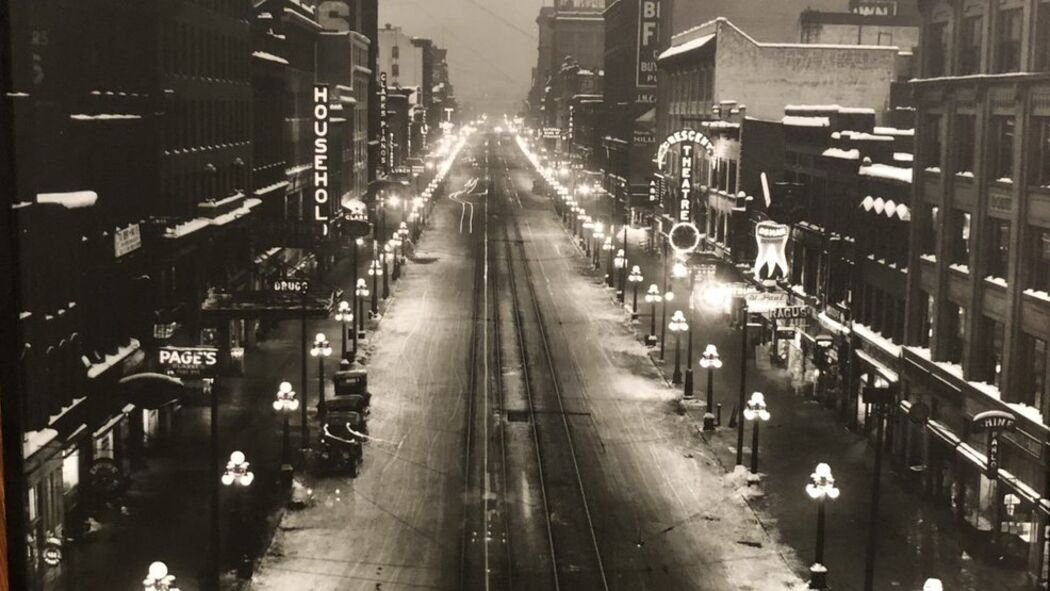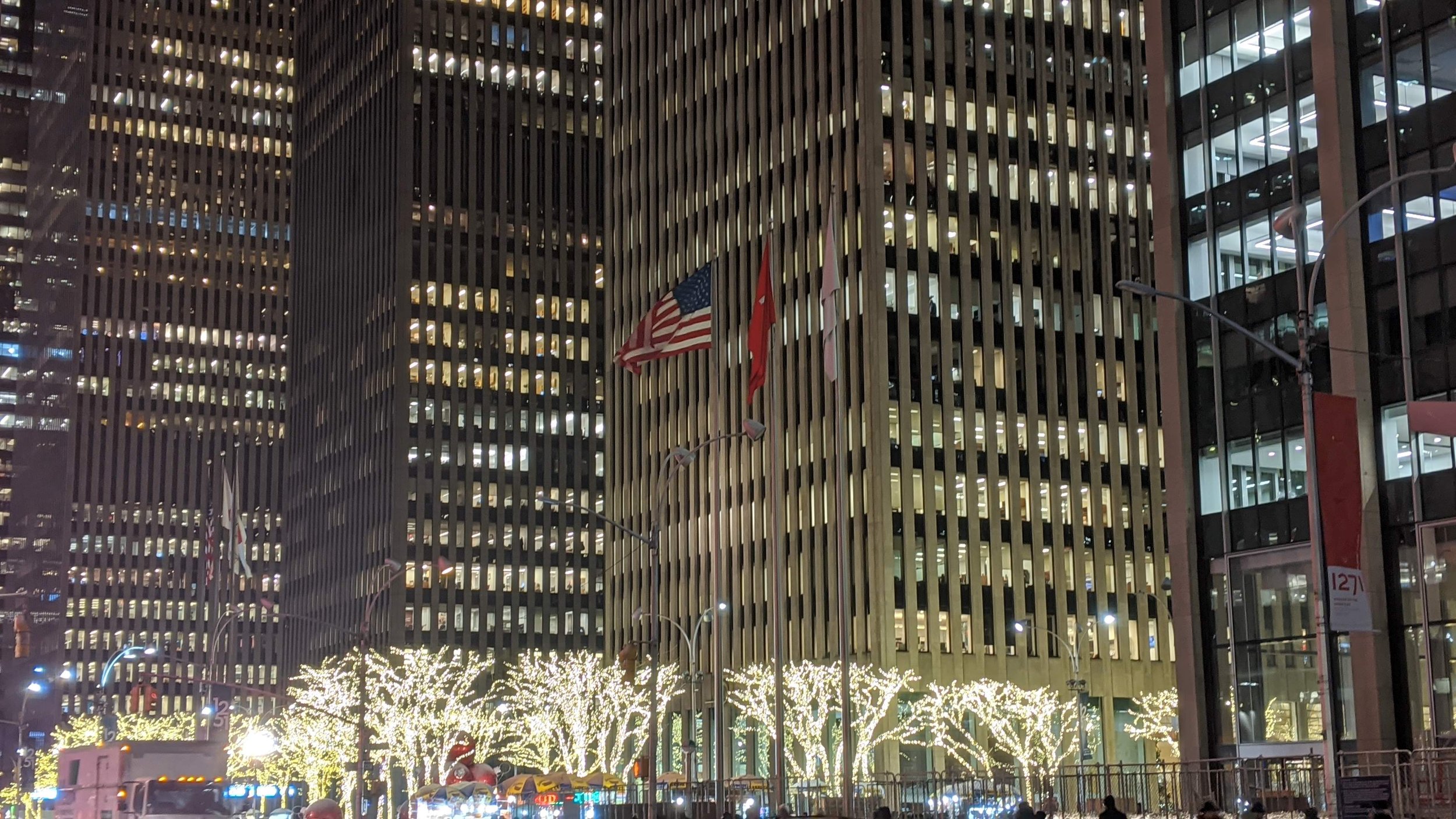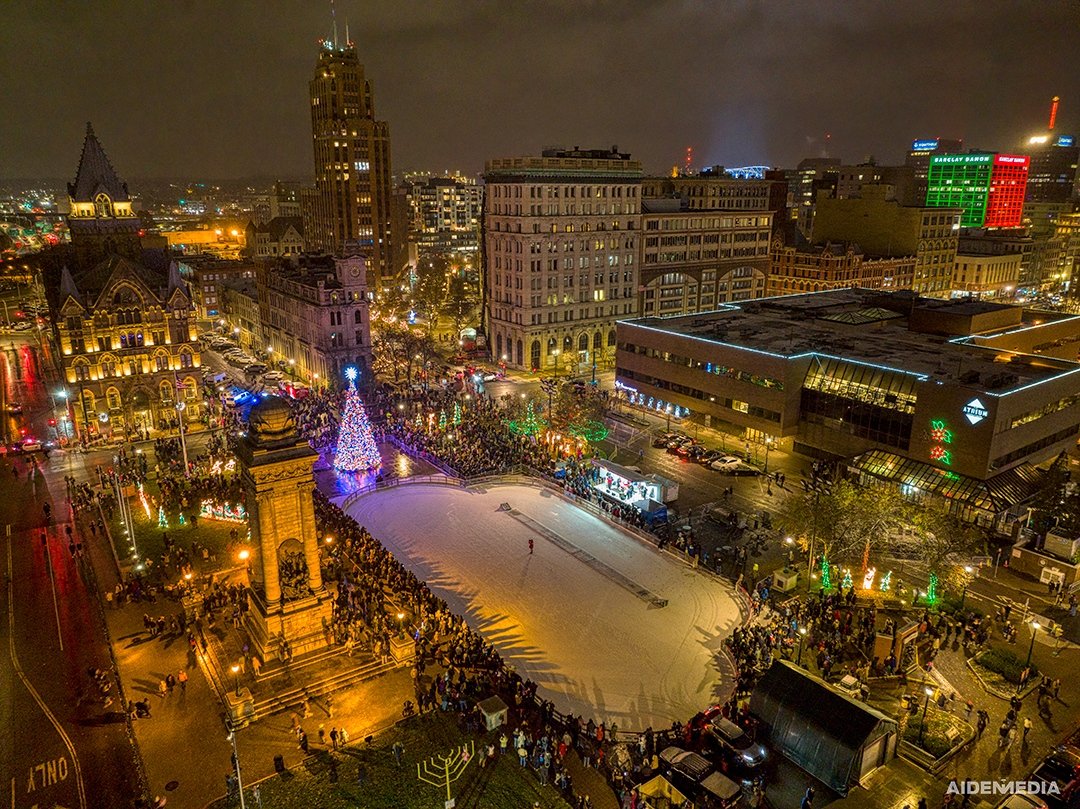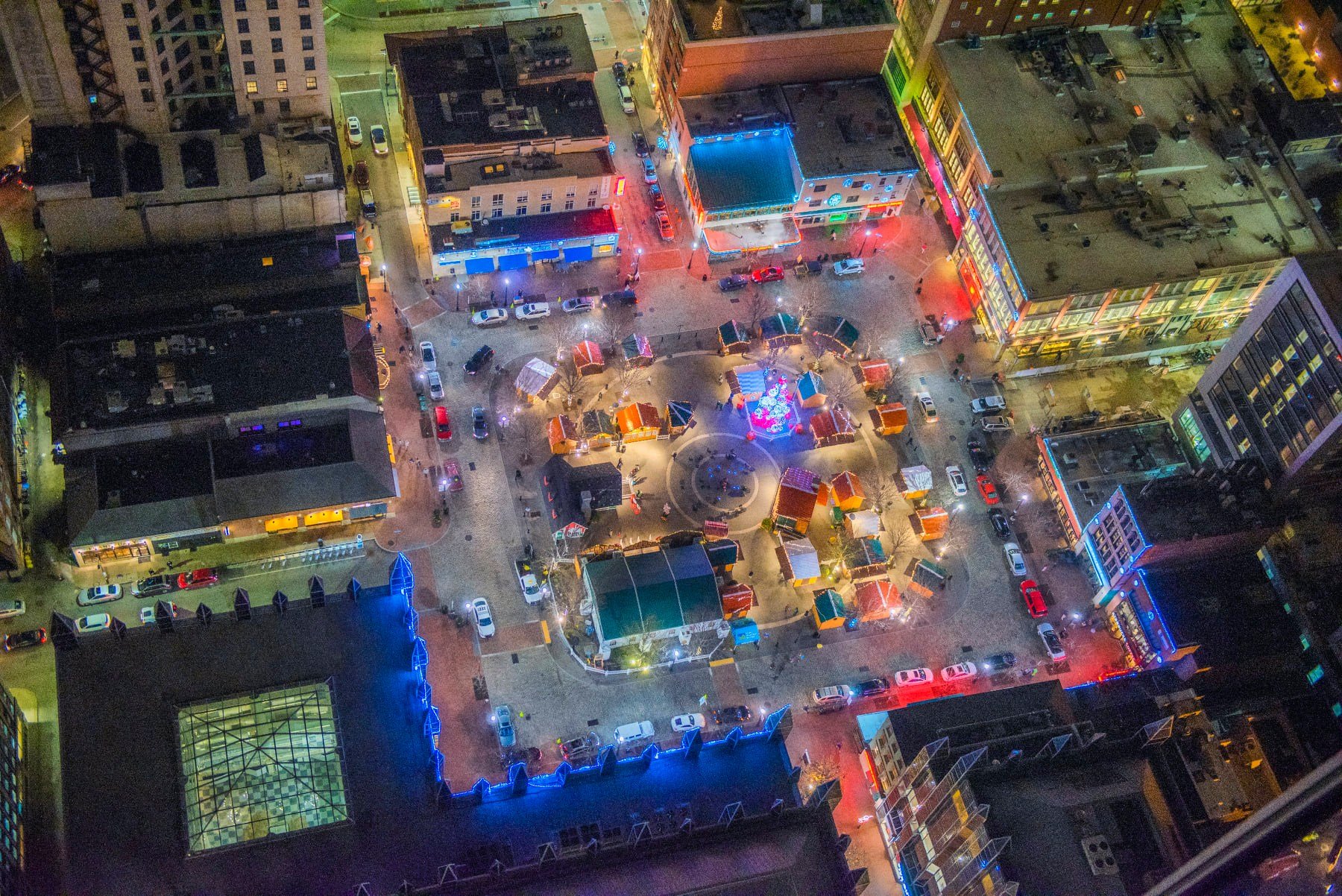What do you picture when you think of the holiday season? Lights? Busy sidewalks? Store windows packed with decorations and gifts on display? A Christmas tree in the heart of the city? Are you seeing a show at the one fancy theatre downtown? Or are you in a park having a snowball fight in your neighborhood?
Now think about your city, or town, when the holidays aren’t around. If you live in a typical American city, that hustle and bustle downtown will fade away. You probably won’t think about the shops on Main Street as much, if at all. And you’ll be back to thinking of road trips and spending time in your car. I’m not sure about you, but when I think of a picturesque holiday scene everyone is walking around, not stuck in a car in traffic.
We might not always realize it, but many of the traditions we celebrate during the holiday season are in fact a celebration of an urban experience we no longer allow to be built. It's an experience of walkability.
Jeff Speck, the author of Walkable City: How Downtown Can Save America, One Step at a Time, identifies four keys to making a city walkable:
Provide a proper reason to walk
Make the walk feel safe
Make the walk comfortable
Create an interesting walk
Let’s think about how our holiday traditions fit into these categories.
A Reason to Walk
There’s one simple answer to this: shopping. While we can argue about the merits of consumerism, there is a joy that comes out of shopping for many people. Window shopping, trying on clothes (whether you can afford them or not), buying gifts for people we love, each offer a type of joy and a reason to shop.
Before the advent of the shopping mall or the super-center, all of our shopping took place Downtown or in neighborhood shops. Now, we celebrate this shopping tradition through Small Business Saturday and other locally focused events aimed at bringing shoppers back Downtown.
Christmas villages famously pop up across Germany, while many American cities have adopted their own versions, including New York and Chicago. New York's Bryant Park, Columbus Circle, and Union Square evolve into shopping and entertainment centers filled with small shops, specialty food vendors, and drinks. They're a Christmas tradition for many residents and visitors that can only really be accessed on foot.
A Safe Walk
An under-appreciated benefit of the holiday lights is the added safety they can bring to someone walking along the sidewalk. Additional lights provide added visibility to pedestrians, making them easier to see for drivers. This has been identified as key safety improvement by Safe Routes to School organizations.
Street lights have also been shown to reduce crime. One study that looked at public housing developments in New York City found that developments that had new lighting installments saw “index crimes” conducted outside at night reduced by 36 percent compared to the other developments.
The added crowds add another form of safety for pedestrians. Jane Jacobs often discussed the benefits of having eyes on the street, reducing the likelihood of crime happening for fear of being caught. Shop keepers, shoppers, and just people out for a walk can all look out for one another as they enjoy the day.
The holidays are also a time to celebrate our public squares, which are often the safest place for a pedestrian to be. Many cities and towns build ice skating rinks within their parks and plazas, providing places to gather safely away from traffic. It's no surprise that these are the places where holiday pop-up shops, Christmas trees, and menorahs are erected.
A Comfortable Walk
Downtown streets, unlike streets in almost any other neighborhood in most American cities, benefit from wide, spacious sidewalks. Pedestrians can walk in groups with friends and families without being forced to walk single-file past strangers. Making walking a social experience creates a comfortable environment for everyone.
While the weather in December may impact the level of comfort for some, trees, awnings, and a cup of hot chocolate should be enough to keep most pedestrians comfortable during the day. Additional accommodations may be necessary at night, or if you’re looking to enjoy an outdoor dining experience, which should be considered more by cities - especially as the pandemic continues through this winter.
An Interesting Walk
The most obvious boost the holidays give to walkability is in the creation of an interesting walk. Shops, restaurants, and even residents decorate their property with lights, signs, and displays. Downtown Syracuse, along with many other cities, hold a window decorating competition to drum up excitement for the holiday season. New York City is filled with over-the-top displays every year, including light shows that stop people in their tracks.
Nearly every city in the country has a central Christmas tree surrounded by other holiday lights, drawing large crowds for lighting events, bringing the most interesting thing in the world to our Downtowns - other people. Humans are social creatures and we can’t help but be fascinated by other people. Bringing people together for large events, or just adding crowds to a sidewalk, intrigues us.
We shouldn’t have to wait for the holidays to enjoy walkability. There’s no reason we can’t add light and warmth to our cities year round. The next time you’re watching a cheesy holiday movie set in a small town where seemingly everyone is in the town square all day, or setting up a small Victorian Christmas village under your tree filled with carolers and horse drawn sleds, think about the ways we can bring that walkability and urbanism to our own cities and towns. We can bring some of that magic to life.
















